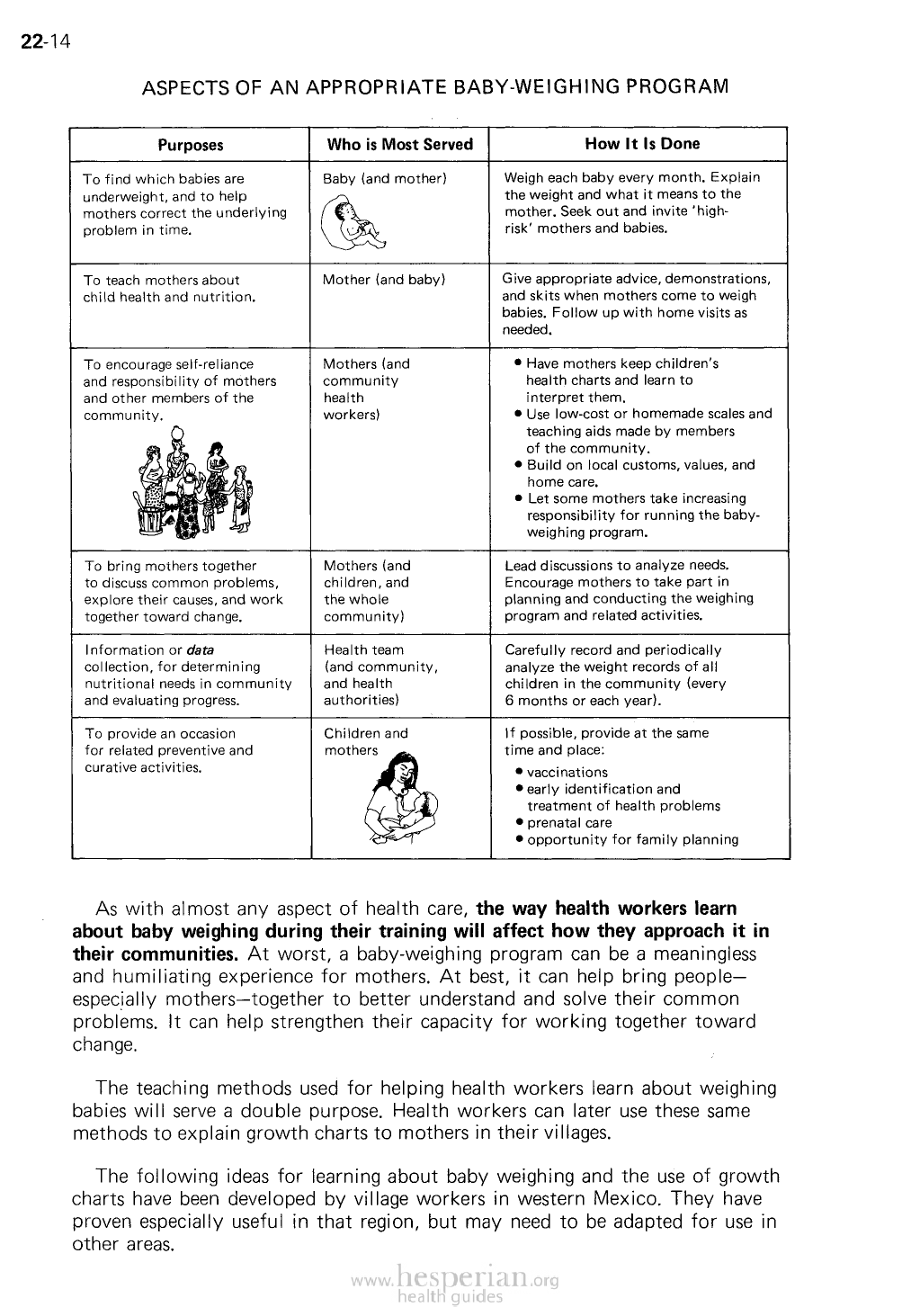
22-16
ASPECTS OF AN APPROPRIATE BABY-WEIGHING PROGRAM
Purposes
To find which babies are
underweight, and to help
mothers co’rect the underlying
problem in time.
Who is Most Served
Baby (and mother)
How It Is Done
Weigh each baby every month. Explain
the weight and what it means to the
mother. SeeV out and invite ‘high-risk’
mothers and babies.
To teach mothers about child
health and nutrition.
To encourage self-reliance
and responsibility of mothers
and other members of the
community.
To bring mothers together to
discuss common problems,
explore their causes, and work
together toward change.
Information or data collection,
for determining nutritional
needs in community and
evaluating progress.
To provide an occasion
for related preventive and
curative activities.
Mother (and baby)
Mothers (and
community
health
workers)
Give appropriate advice, demonstrations,
and skits when mothers come to weigh
babies. Follow up with home visits as
needed.
• Have mothers keep children’s health
charts and learn to interpret them.
• Use low-cost or homemade scales and
teaching aids made by members of the
community.
• Build on local customs, values, and
home care.
• Let some mothers take increasing
responsibility for running the baby-
weighing program.
Mothers (and
children, and
the whole
community)
Health team land
community, and health
authorities)
Lead discussions to analyze needs.
Encourage mothers to take part in
planning and conducting the weighing
program and related activities.
Carefully record and periodically analyze
the weight records of all children in the
community (every 6 months or each year).
Ciildren and
mothers
If possible, provide at the same lime and
place:
vaccinations
early identification and
treatment of health problems
prenatal care
opportunity for family planning
As with almost any aspect of health care, the way health workers learn about
baby weighing during their training will affect how they approach it in their
communities. At worst, a baby-weighing program can be a meaningless and
humiliating experience for mothers. At best, it can help bring people-especially
mothers—together to better understand and solve their common problems. It can
help strengthen their capacity for working together toward change.
The teaching methods used for helping health workers learn about weighing
babies will serve a double purpose. Health workers can later use these same
methods to explain growth charts to mothers in their villages.
The following ideas for learning about baby weighing and the use of growth
charts have been developed by village workers in western Mexico. They have
proven especially useful in that region, but may need to be adapted for use in other
areas.